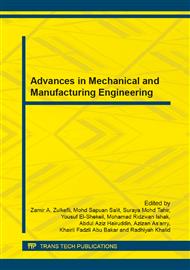p.245
p.250
p.256
p.263
p.269
p.275
p.281
p.287
p.292
The Effect of Nozzle Configuration on Characteristics of Fluidic Excited Jets
Abstract:
Using fluidic self-excited jets increases the rate of fluid mixing and reduces fuel consumption in industry burners (torches) and combustion chambers. The geometry of such jets is an important factor for fluidic jet determination. This study is concerned with investigating the types of fluidic nozzles configuration. The effect of nozzle configuration types was studied on various parameters such as frequency, velocity profile, velocity decay rate, the half angle of jet spread, and entrainment ratio. Maximum frequency and excited oscillation amplitude of fluidic jets were observed in the original geometry configuration. Also, the maximum spread rate and minimum velocity profile were observed in this geometry. Velocity decay rate shows its maximum magnitude in the original geometry configuration. Turbulence intensity reaches its maximum value in this geometry without any internal nozzle, whereas it shows the minimum value at geometry with an additional wall along the internal nozzle. The maximum increase in the half angle of jet spread was seen in the original geometry configuration. In this geometry, entrainment ratio is less than one, while in the geometry to create steady jets, entrainment ratio is more than one.
Info:
Periodical:
Pages:
269-274
Citation:
Online since:
June 2014
Keywords:
Price:
Сopyright:
© 2014 Trans Tech Publications Ltd. All Rights Reserved
Share:
Citation:


